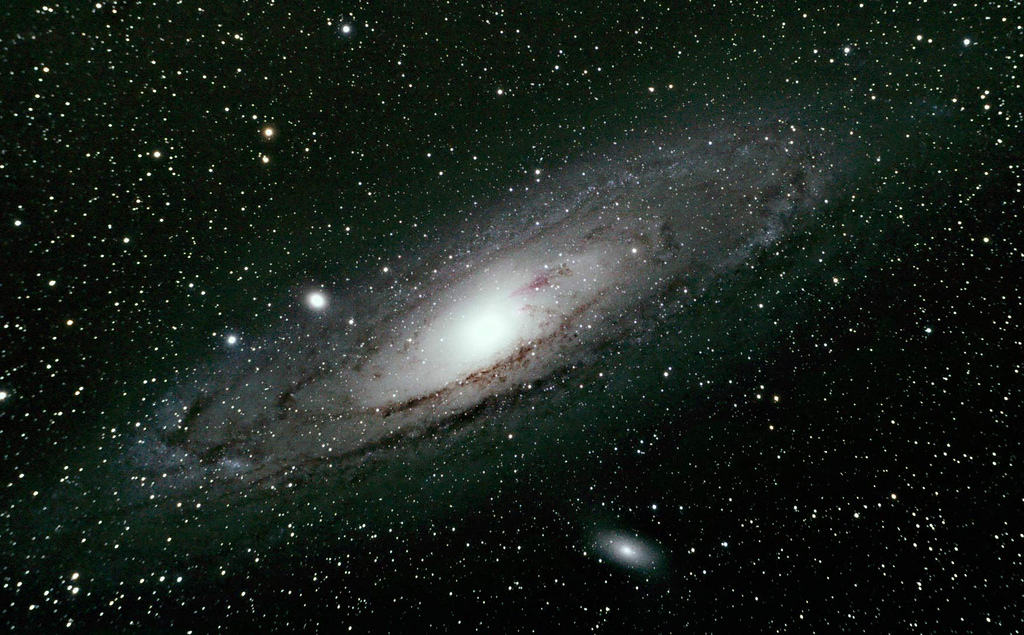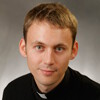During my first year as a Jesuit I helped with the 4-year-old preschool at Our Lady of La Salette parish across the street from the old novitiate in Berkley, Michigan. I learned two things there.
First, I learned that there is a strong lobby among the 4-year-old set for only having cats on Old MacDonald’s Farm (meow, meow). Though just about every animal from Roosters to Rats had it’s own interest group, the Cat supporters were by far the most vocal. Given how sedate cats normally are, I considered this highly ironic. Second, I learned that 4-year-olds really want to get to the bottom of things. Why does the farm have so many animals? Why is the sky blue? Why do we have nap time everyday? Why is it cold outside?
The questions came in many varieties, but at their core they all seemed to come down to this: why is the world, which I am growing increasingly aware of, the way it is and not some other way? What is the reason things are this way, and not that way? It’s a good line of questioning for anyone aged four and up.
Happily there is no shortage of answers to the why question. Why questions dwell at the very core of the human spirit, though what counts as a good answer seems to change as we grow up. For little kids the answers tend to be narrative (e.g., the sun sets because it’s tired). For adults, though, there are a wide variety of answers to those same why questions, a variety that ranges from the narrative to the mathematic. And among the most successful of all the grown up ways of answering why questions has been: physics. Ever since Isaac Newton and the apple (see that narrative answer I just plugged in there?) physics has been the gold standard of explanation. Much like the preschooler went to her teacher for answers to those pressing why questions, so grown-ups go to the sciences, particularly, we go to physics.
And generally speaking both of these are good ideas. My preschool teachers were very bright women. Anyone that can lull a group of twenty four-year-olds to sleep using a mixture of choreographed songs involving lots of jumping and strategically deployed juice boxes deserves naught but praise.
The problem is, neither physics nor preschool teachers can really answer the why question. The things is, preschool teachers have known this for a long time while it’s just recently that physicists seem to have figured it out too.
***
In this past December’s Issue of Harper’s Magazine, MIT Professor Alan Lightman took a stab at using physics to answer one of the greatest why questions: why is the universe the way it is?
Spoiler alert, he doesn’t know. More interestingly, he doesn’t think physicists are likely to figure it out.
The genius of physics is its ability to reduce a vast number of observable phenomena to a few relatively simple and elegant formulae (think back with me now, remember F=ma or E=mc^2?). And we have to say, physics has enjoyed several hundred years of truly remarkable success. It’s explained more and more phenomena using fewer and fewer formulae. Take just about any visible movement on earth – Newton can do a pretty good job of explain that for you. Look up at the sky at night – Einstein’s mostly got you covered there. Want to know about the electrons in your computer? Maxwell’s equations are a good start. But the great hope of physics’ simplification project was the dream that, one day, one formula could explain everything.
Until a few decades ago most physicists held on to this hope as something actually achievable; now they’re less sanguine. Professor Lightman says that this pessimism is an increasingly common view among physicists, “There is no hope of ever explaining our universe’s features in terms of fundamental causes and principles” he says.
The disappointment Professor Lightman speaks of stems from the fact that there are four fundamental and irreducible forces in the universe, the weak and strong nuclear forces, the electromagnetic force, and gravity. If these four forces were changed by even a fraction of a percent, the universe would be fundamentally different. And we almost certainly wouldn’t be here to talk about it.
The way the universe appears today depends upon these forces being balanced precisely in the way that they are. Despite all their efforts physicists can’t seem to figure out why it is that the universe has exactly these very precise specifications. Surprising as it may be given the enormous growth in human understanding of the world, it’s safe to say that we live in a universe that we are far from understanding, perhaps much farther away than we thought only decades ago.
One popular (though in my humble estimation highly unsatisfying) answer as to why the universe is the way it is is proposed by Laurence Krauss1 Krauss posits a multiverse, that is, he explains away the astronomically rare precision of our universe by positing the existence of an incredibly vast number of universes. That is, it just so happens that it is our universe is structured the way it is for no particular reason other than that, if you have enough universes, one them will eventually turn out to be perfectly balanced in the way that ours is. Simply put, Krauss argues that random, dumb chance explains everything. And unfortunately, claiming that the universe is random halts the investigative process. So to put Krauss’ argument in preschool vernacular, this is a “I’m taking my toys and going home” solution to the nature of the universe.
***
For believers, it can be tempting to fill these scientific holes, these gaps in explanation, with God. That is, it’s easy for me to want to say something like this: “well, Lightman, God must have specially designed the four forces in this way, so why worry about it? If we can’t figure it, then no further science is needed.” But, truth be told, letting God fill those gaps in scientific theory has proven to be a terrible idea – both for science and for faith.2 What is more, positing a God of the gaps is often the believer’s version of “I’m taking my toys and going home answer.” Appealing to randomness is one conversation stopper. Appealing to the direct intervention of God in physical processes is another.
None of this is to say that scientific understandings ought not inform religious understanding and vice versa. They should, but the relationship between those two is complex for any number of reasons (in fact there are so many reasons that this really calls for another essay or twenty).
The science in the Lightman article is fascinating, but it’s the disappointment of those scientists who thought that they had everything figured out that is most striking. An answer that had seemed so tantalizingly close, at the tip of the scientific tongue so to speak, now seems vastly far away. Physicists who entered the field optimistic about the prospect of solving fundamental problems are now retiring, leaving their discipline less sure about its explanatory powers.
And they’re not alone. It might be a cliché, but I find that the more I learn about philosophy or theology or even science, the more I realize how much I don’t know. It really does seem to me that the human capacity to ask why forever outpaces our capacity to imitate our pre-school teachers and come up with answers. Better minds than mine, however, have said that it is in this coming-to-the-end-of-our-knowledge, in seeing the limits of our capacity to learn, that we are finally in a position to approach the mind of God. One Blaise Pascal, using the best cosmology of his own day, made this very point quite poignantly in Pensee 72. He writes:
Let man then contemplate the whole of nature in her full and grand majesty, and turn his vision from the low objects which surround him. Let him gaze on that brilliant light, set like an eternal lamp to illumine the universe; let the earth appear to him a point in comparison with the vast circle described by the sun; and let him wonder at the fact that this vast circle is itself but a very fine point in comparison with that described by the stars in their revolution round the firmament. But if our view be arrested there, let our imagination pass beyond; it will sooner exhaust the power of conception than nature that of supplying material for conception. The whole visible world is only an imperceptible atom in the ample bosom of nature. No idea approaches it. We may enlarge our conceptions beyond an imaginable space; we only produce atoms in comparison with the reality of things. It is an infinite sphere, the centre of which is everywhere, the circumference nowhere. In short, it is the greatest sensible mark of the almighty power of God that imagination loses itself in that thought.
Preschoolers live in a big, confusing world that they want very much to understand. They want to know the why of everything. It is by asking why that four-year-olds reveal their openness to the vast mystery that is our world. Pascal wants us grown-ups, scientists and theologians both, to imitate their attitude in our own questioning.
For me, asking why with sincerity requires that I be open to hearing the surprising, painful, even frightening answers that our universe holds. Even more, it’s when I am my most open that I most often glimpse, however fleetingly, the hand of God at work in creation.
— — — — —
- Full disclosure: though Krauss is a brilliant and highly respected physicist, I will always remember and admire him for being the guy that wrote The Physics of Star Trek, which was my favorite book for the entirety of my sophomore year of high school. ↩
- Not to mention the fact that the very same scientific theory can be used on the side of atheism in many cases as well… and that when the theory changes both atheists and believers are then left scrambling. ↩





